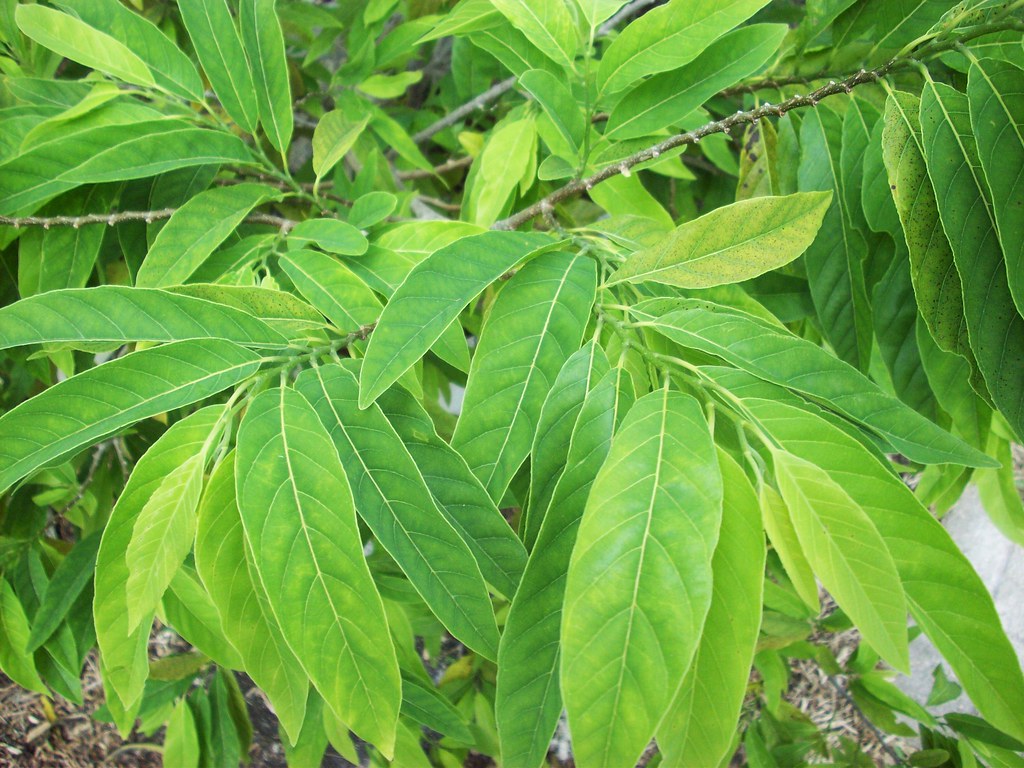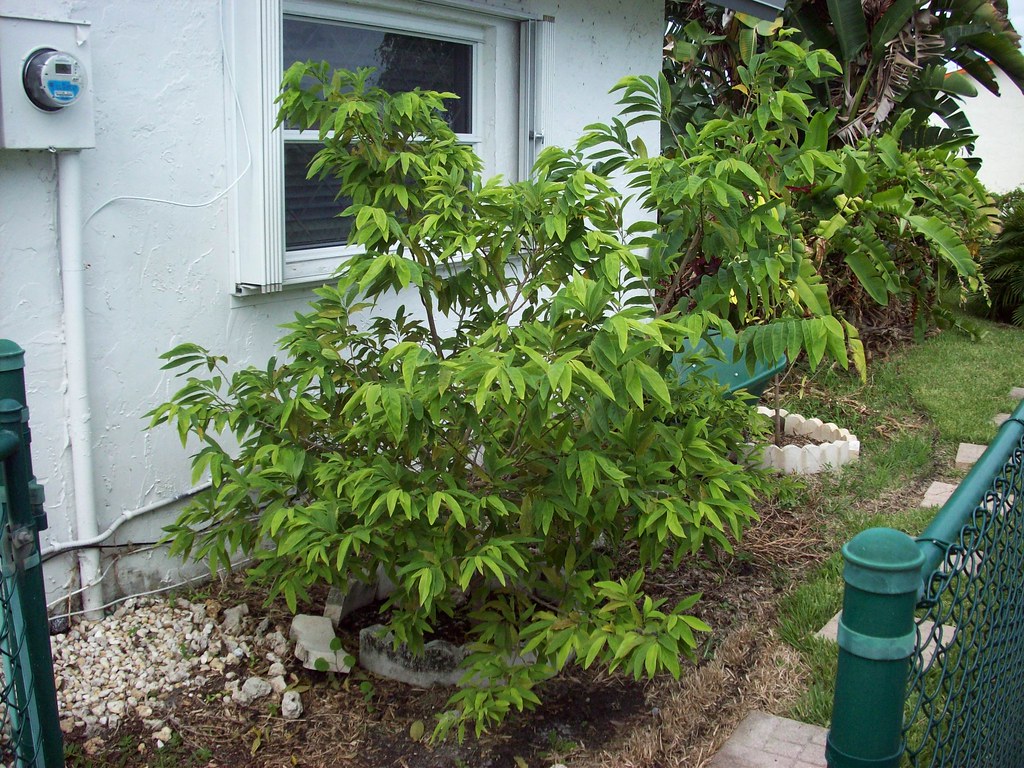


Family: Annonaceae •
Genus: Annona •
Species: squamosa (L.) •
Country of Origin: South America •
Common Names: Sugar Apple, Sweetsop •
I got this at a RFVC plant sale. This rare cultivar has purple/reddish fruits. It is growing on the south side of the house with the Wampee. This fruit has a pear like taste & texture, with a tropical twist. This species doesn't grow more than fifteen to twenty feet high so it's easy to harvest your fruit. The name 'Kampong Mauve' comes from David Fairchild's home the Kampong. This is one of the cultivars he introduced and I'm told one of his favorites.
The Sugar-Apple is more widely disseminated throughout the tropics than any other species of Annona, and in many regions is an important fruit. Particularly is it esteemed in India, where it is extensively grown. P. Vincenzo Maria wrote of it in 1672: "The pulp is very white, tender, delicate, and so delicious that it unites to agreeable sweetness a most delightful fragrance like rose water . . . and if presented to one unacquainted with it he would certainly take it for a Blanc-mange."
The tree is smaller than that of most other species of the genus, its maximum height being 15 to 20 feet. Like the Cherimoya, it is semi-deciduous. The leaves resemble those of A. reticulata except in their smaller size; they are lanceolate or oblong-lanceolate in form, acute or shortly acuminate at the apex and acute at the base, 2 1/2 to 4 inches long, pale green on both surfaces, and glabrate or nearly so, except for the sparsely pubescent petiole.
The flowers, which are produced singly or in clusters of two to four, resemble those of A. reticulata. They are greenish yellow in color, about an inch long, the three outer petals oblong, thick, rounded at the tips; the inner petals minute, ovate.
The fruit is round, heart-shaped, ovate or conical, 2 to 3 inches in diameter, yellowish green, green, pink or purple in color. The surface is tuberculate and covered with a whitish bloom. The pulp is white, custard-like, sweet and slightly acidulous in flavor. The carpels, each of which normally contains a brown seed the size of a small bean, cohere loosely or not at all, the Sugar-Apple differing in this respect from the Cherimoya, in which it is difficult to distinguish carpellary divisions in the flesh. [1]
[1] Manual Of Tropical And Subtropical Fruits | by Wilson Popenoe

Annona squamosa 'Kampong Mauve' by Eric Bronson is licensed under a Creative Commons Attribution-Noncommercial-No Derivative Works 3.0 United States License.
Based on a work at www.flickr.com







3 comments:
I have the green version of this fruit tree. Here we call it Custard apple or 'Sitaphal' ("phal" = fruit ). Annona reticulata is locally known as 'Ramphal'.
Both these fruits are locally named after the two main characters, Ram and Sita, in the Indian epic, Ramayan.
Very interesting Sunita, thanks for sharing that. I read the Bhagavad Gita many years ago when I was studying different religions. So I'm familiar with some of the stories! I didn't know you used their names for the fruit though.
Thanks for the motivation posting this. We need to submit a correction, the 'Kampong Mauve' was not introduced by Dr. David Fairchild. The story goes according to various RFCI Miami members, that the late Larry Schokman was send some seeds from Australia that resulted in what we call (Annona squamosa) 'Kampong Mauve'. It was certainly named honoring Dr. Fairchild & The Kampong, but it was not introduced way back when by Dr. F, it was either in the late 1980s or early 1990s. Crafton Clift & Maurice Kong both share the same story.
Rare Fruit Council Int'l (RFCI), Miami
Established in 1955
Post a Comment